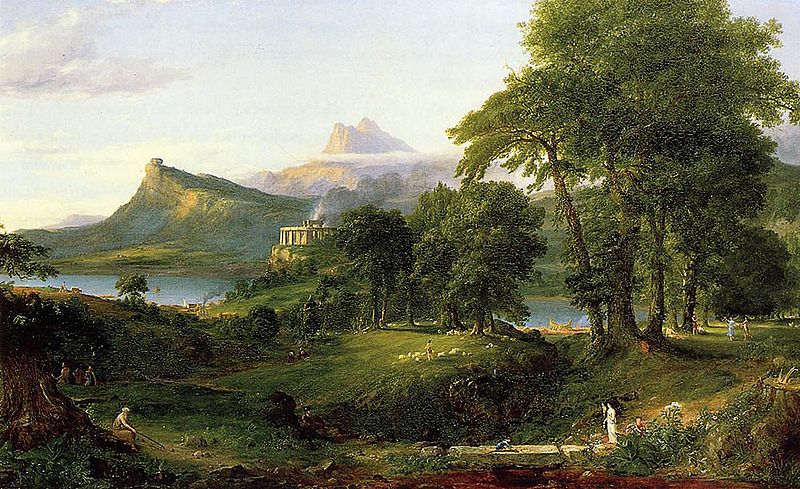I read a handful of poems yesterday and liked two by C. G. Rossetti (1830-94). Easy to spot that she had something to do with the pre-raphaelite movement. In the poem Dreamland the same themes are apparent as in some of the paintings by this movement.
DREAM-LAND.
Where sunless rivers weep
Their waves into the deep,
She sleeps a charmèd sleep:
Awake her not.
Led by a single star,
She came from very far
To seek where shadows are
Her pleasant lot.
She left the rosy morn,
She left the fields of corn,
For twilight cold and lorn
And water springs.
Through sleep, as through a veil,
She sees the sky look pale,
And hears the nightingale
That sadly sings.
Rest, rest, a perfect rest
Shed over brow and breast;
Her face is toward the west,
The purple land.
She cannot see the grain
Ripening on hill and plain;
She cannot feel the rain
Upon her hand.
Rest, rest, forevermore
Upon a mossy shore;
Rest, rest at the heart’s core
Till time shall cease:
Sleep that no pain shall wake,
Night that no morn shall break,
Till joy shall overtake
Her perfect peace.
Source: gutenberg.org
I liked the image of the “waves into the deep” in the first couplet. It made me think that using nature to describe things is one thing, but using it right another. There is a world of difference between a painting of a landscape made by someone with an superficial eye or by someone with passion and devotion. Using nature in poems must be like that too. Yes, it has been done ever since people where able to write, and every symbol has been used numerous times (a rose, anyone?) but that doesn’t mean that it can be effective when used rightly.
The dead body let by a star and the contrast of the body “willingly” floating to the dark side, a side that is considered not a good place to be anyway, away from the rosy morn – fields of corn etc. is intriguing.
